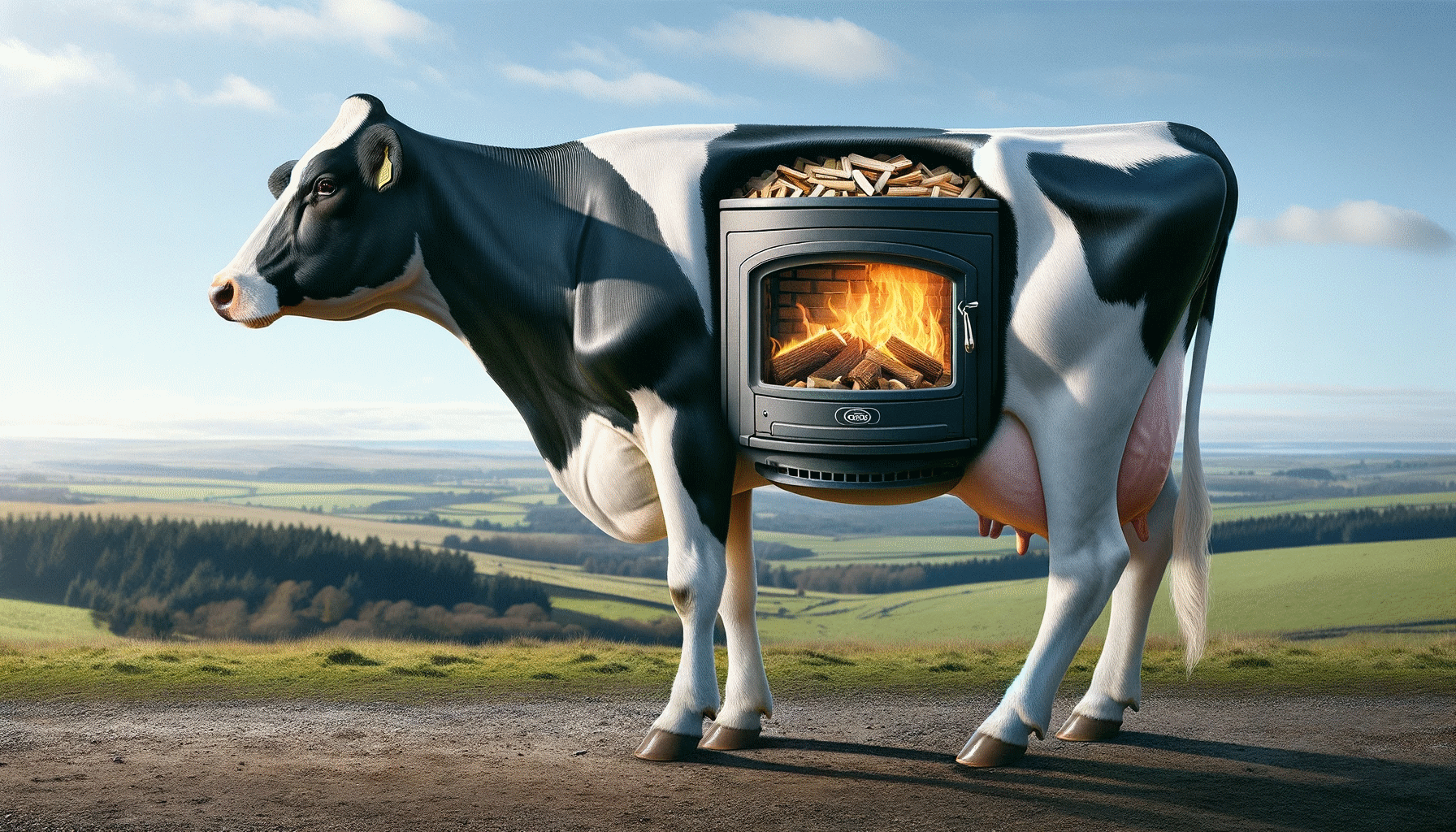
Key to the profitability and health of ruminant enterprises is the efficiency at which the rumen converts low cost feeding into high value milk and meat.
Yeast (In this case: Saccharomyces cerevisiae) can play a part in this and be greatly beneficial in stabilising the rumen environment, leading to improved digestibility, milk production and animal health.
Yeast can have a number of functions within the cow:
- Contibute to a healthy rumen environment for bacteria
- Improve Feed Conversion Efficiency
- Improve milk production
- Combat effects of heat stress
A healthy rumen
 The rumen can be thought of like a log burner. The hotter it burns, the more heat (energy & protein) it gives out.
The rumen can be thought of like a log burner. The hotter it burns, the more heat (energy & protein) it gives out.
But, unlike a log burner, the rumen will burn hotter by excluding oxygen.
One of the actions yeast performs is to ‘mop up’ oxygen which enters the rumen through the feed making it a better environment for the bacteria populating the rumen.
Rumen bacteria operate at their best in an almost totally oxygen free environment (Anaerobic) so less oxygen = more digestion.

Another issue that challenges a stable rumen is the production of lactic acid. The increase in lactic acid drops rumen pH which in turn inhibits the fibre digesting bacteria reducing FCE.
Yeast is thought to encourage the growth of the lactic acid utilising bacteria, thus maintaining rumen pH in the range which is most favourable for the fibre digesting bacteria.
A low rumen pH is also bad for the bacteria which help reduce the harmful effects of mycotoxins.
Calculating the value
Analysis of a large number of studies (Meta-analysis of 110 papers, 157 experiments) in France[1] provides calculations used to make the calculator below.
These data show the beneficial effects of increased DMI, digestion, milk yield and a reduction in lactic acid.
The authors of this study note that using such a wide range of data provides a slightly distorted average, as yeast works best where its use is targeted.
Trials where the use has been more targeted have demonstrated much higher milk yield responses of ~1.5 litres per cow per day.
When to use yeast
When considering yeast, consider the lead in period and sustained use. Use yeast to:
- Drive dry matter intakes
- Where rumen stability and pH is compromised
- High starch & sugar diets
- Where dung is showing lack of fibre digestion and structure
- Leading up to and during periods of heat stress
- Potential mycotoxin challenges
- Improve Feed Conversion Efficiency
- High sulphur diets (indicated by milk fat suppression)
- Increase milk yields
The calculator below is provided to help you consider the value of using yeast in the diet. Every situation is different, and this calculator should be viewed of as a basis of thinking and is not definative for every situation.
[1] Desnoyers, Marion & Giger-Reverdin, Sylvie & Bertin, Gerard & Duvaux-Ponter, Christine & Sauvant, Daniel. (2009). Meta-analysis of the influence of Saccharomyces cerevisiae supplementation on ruminal parameters and milk production of ruminants. Journal of dairy science. 92. 1620-32. 10.3168/jds.2008-1414.
